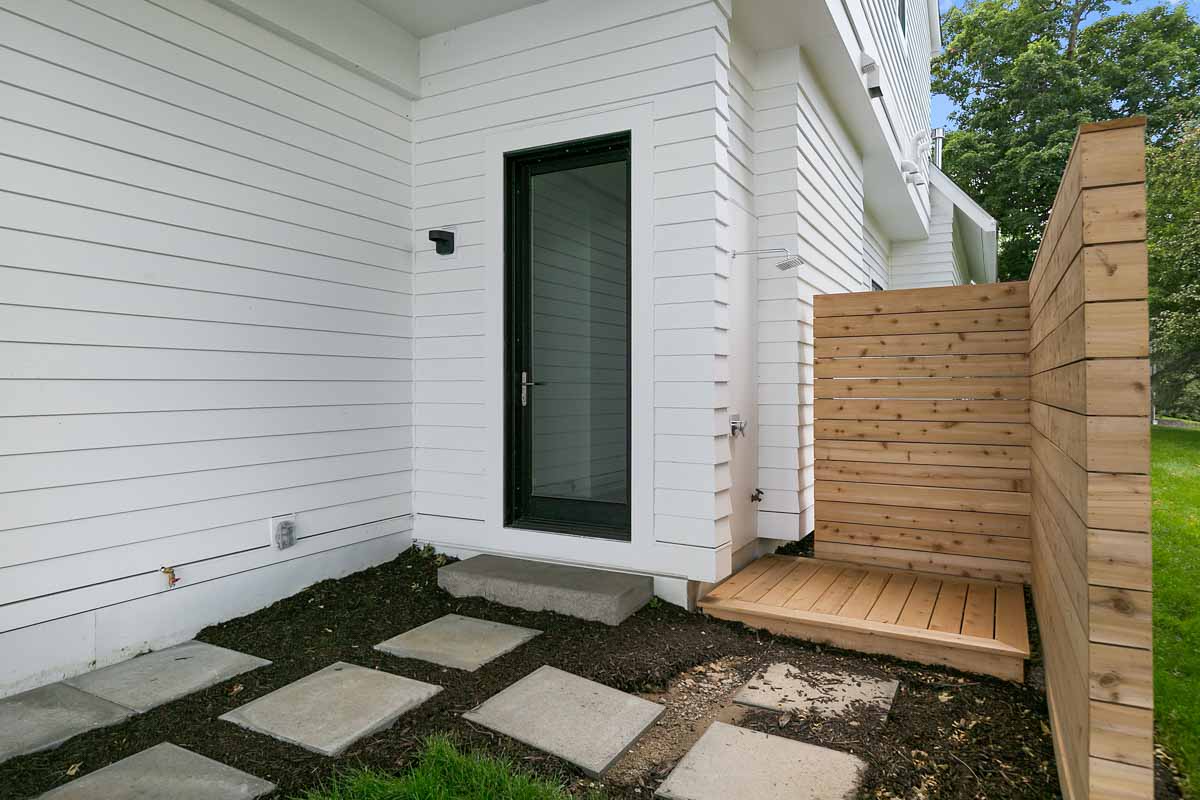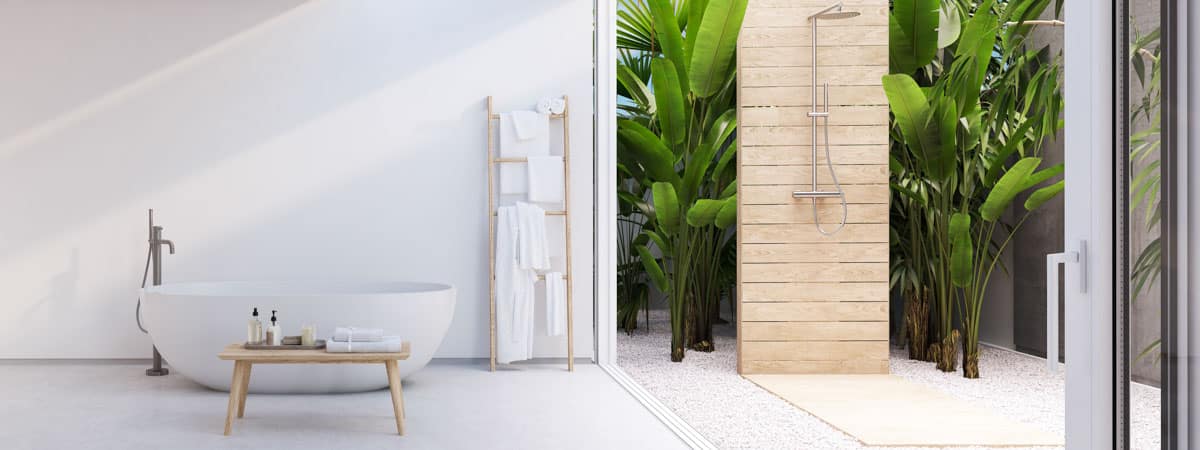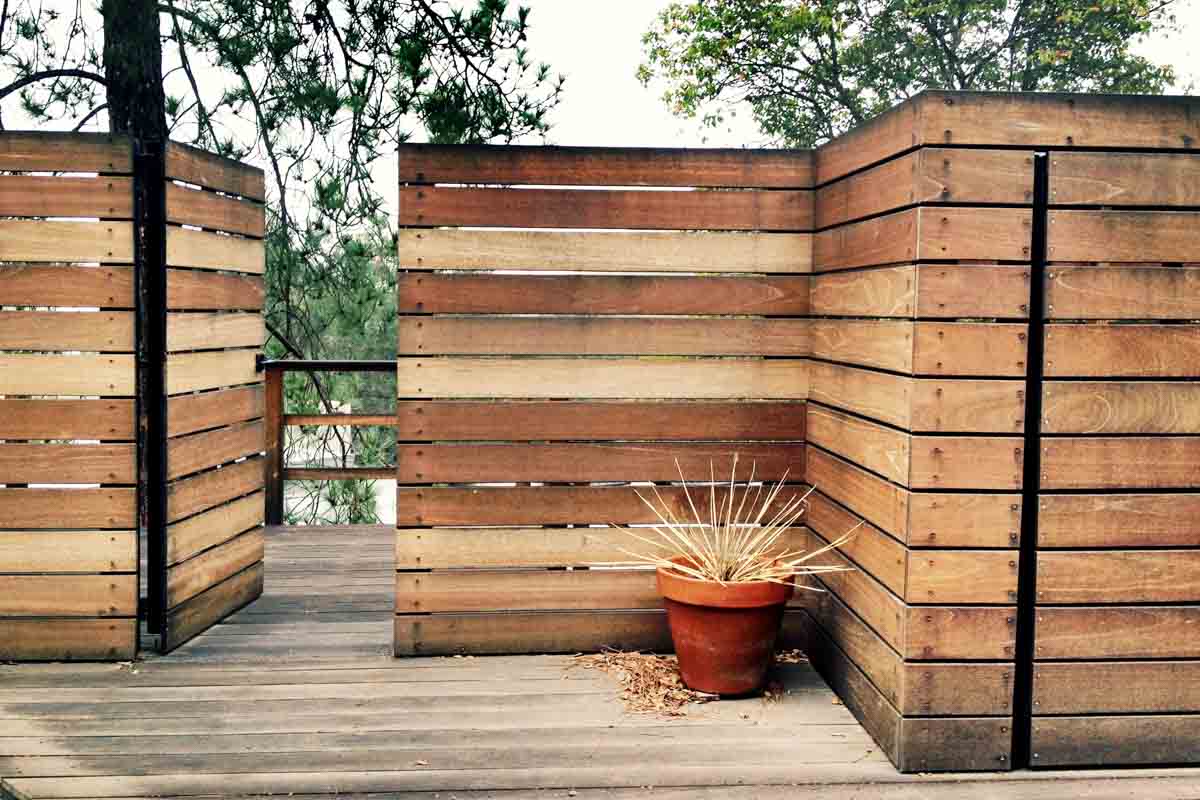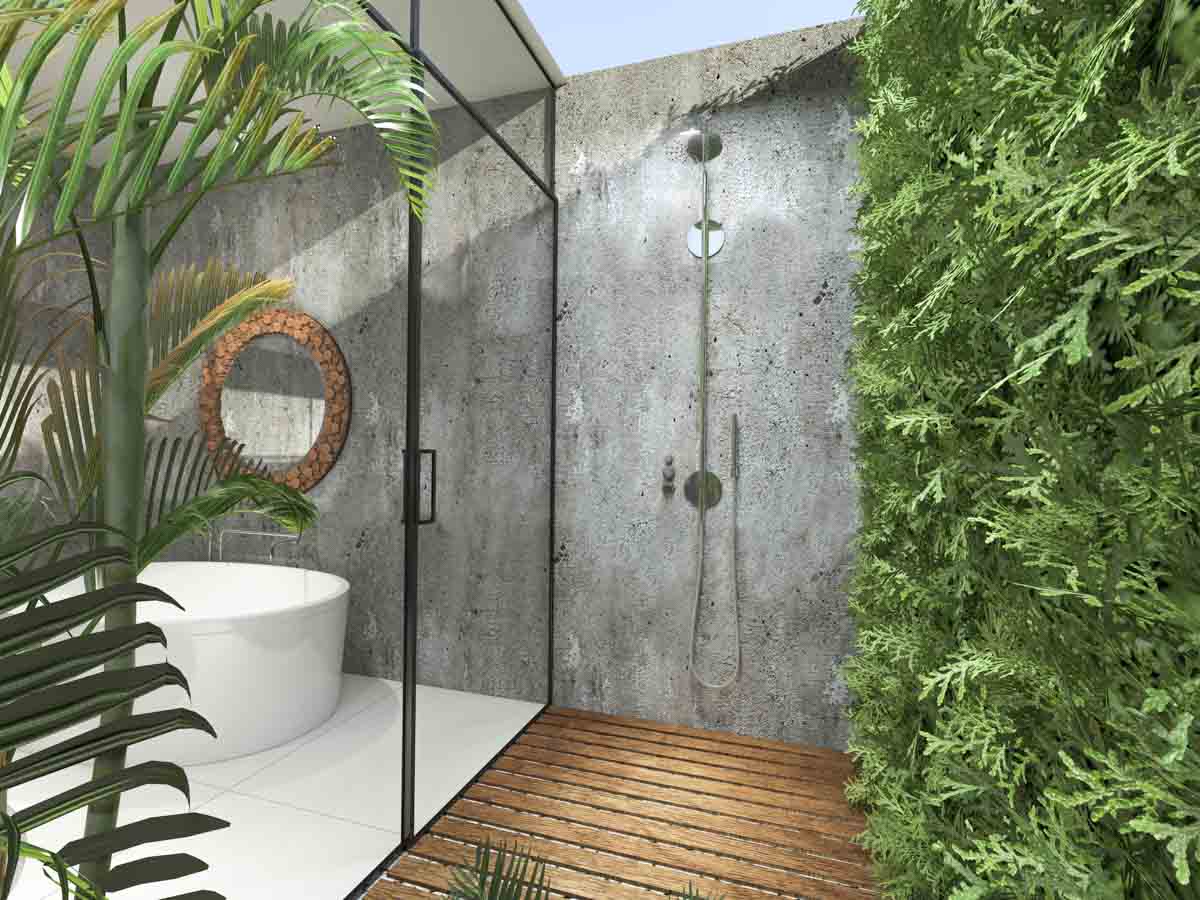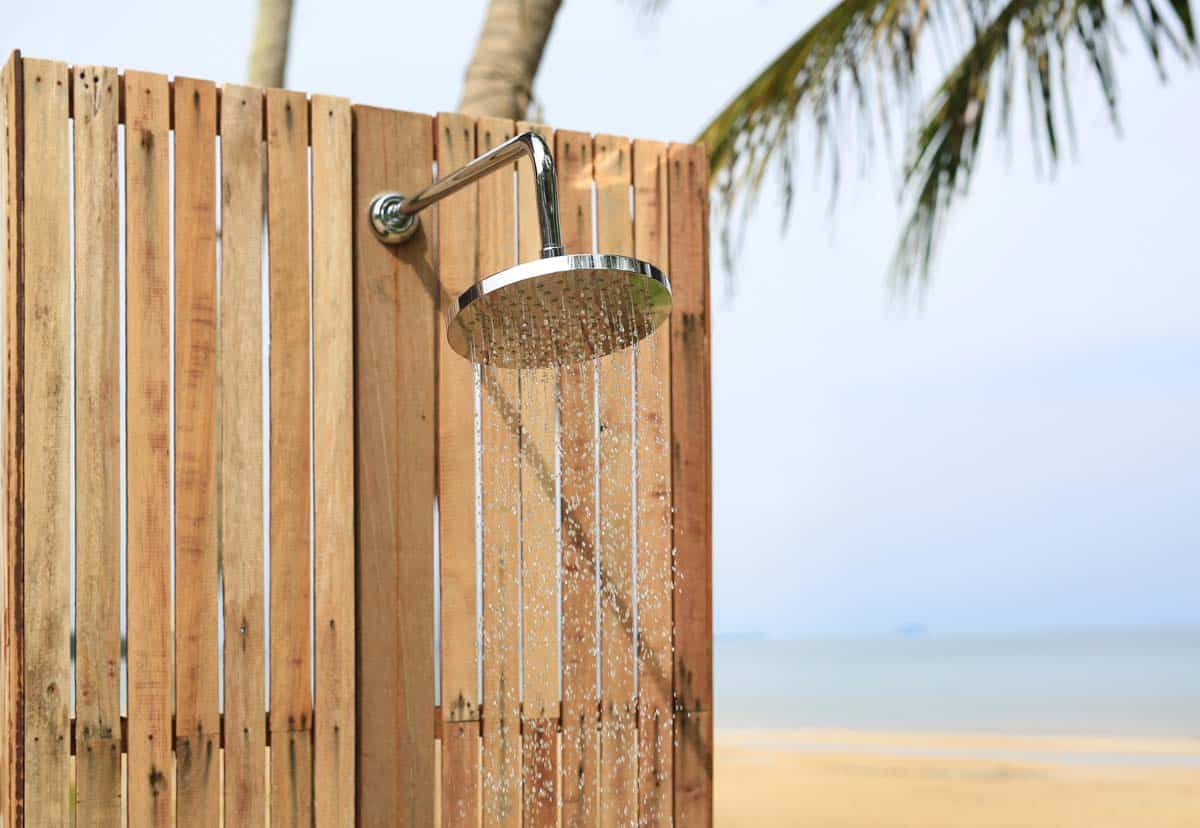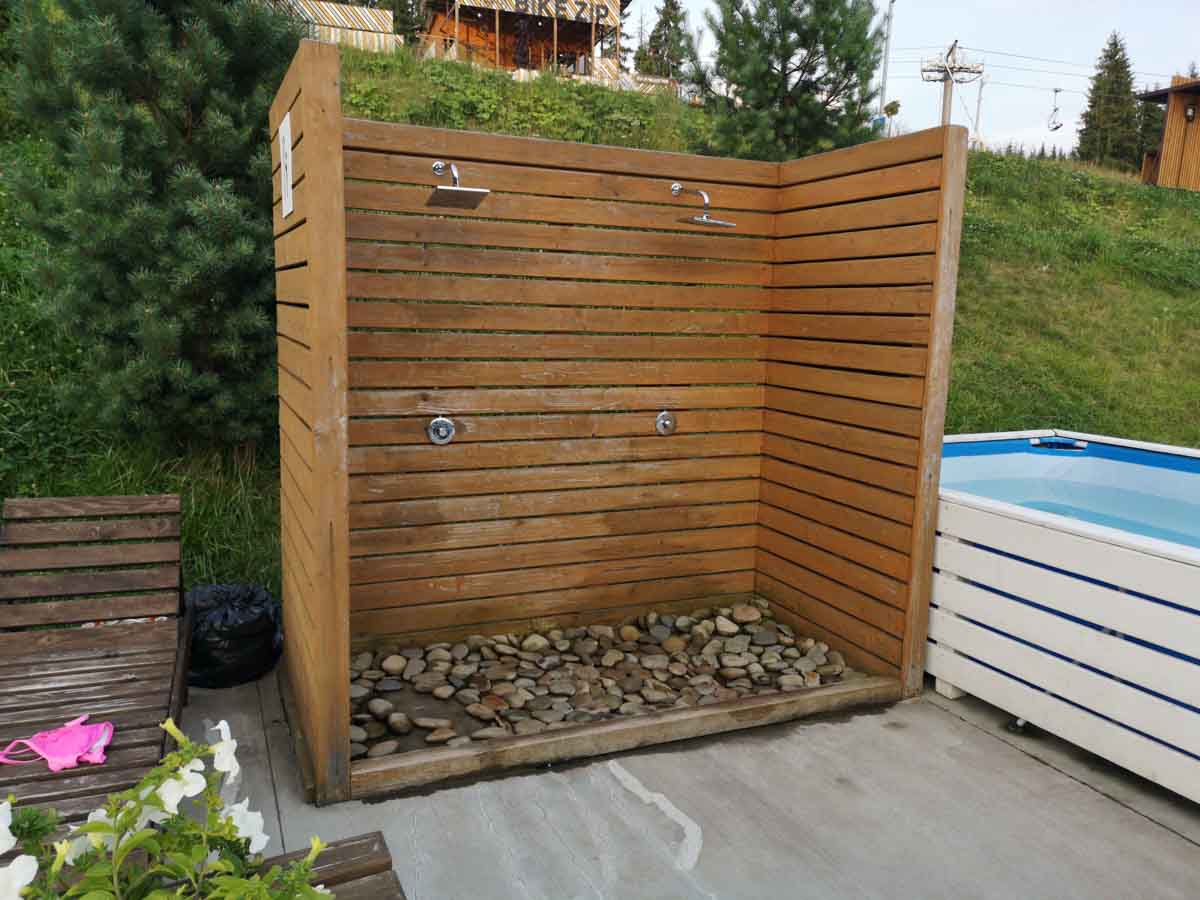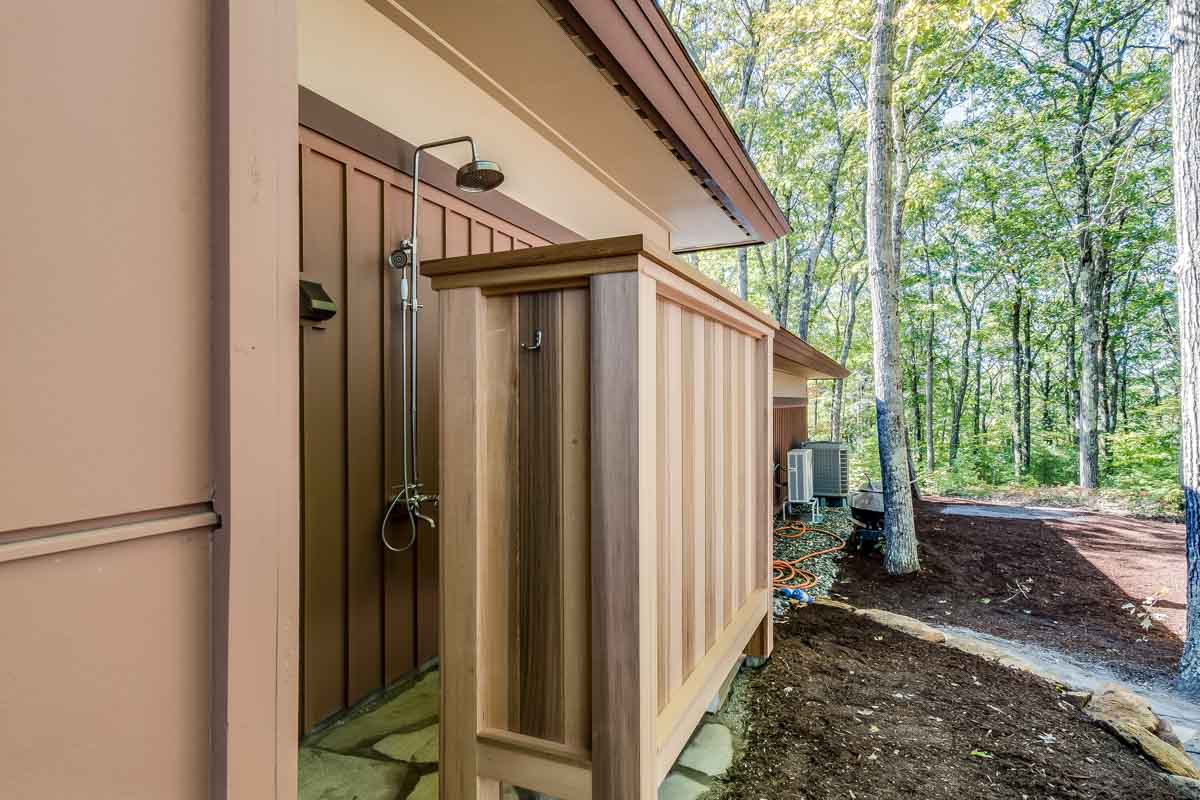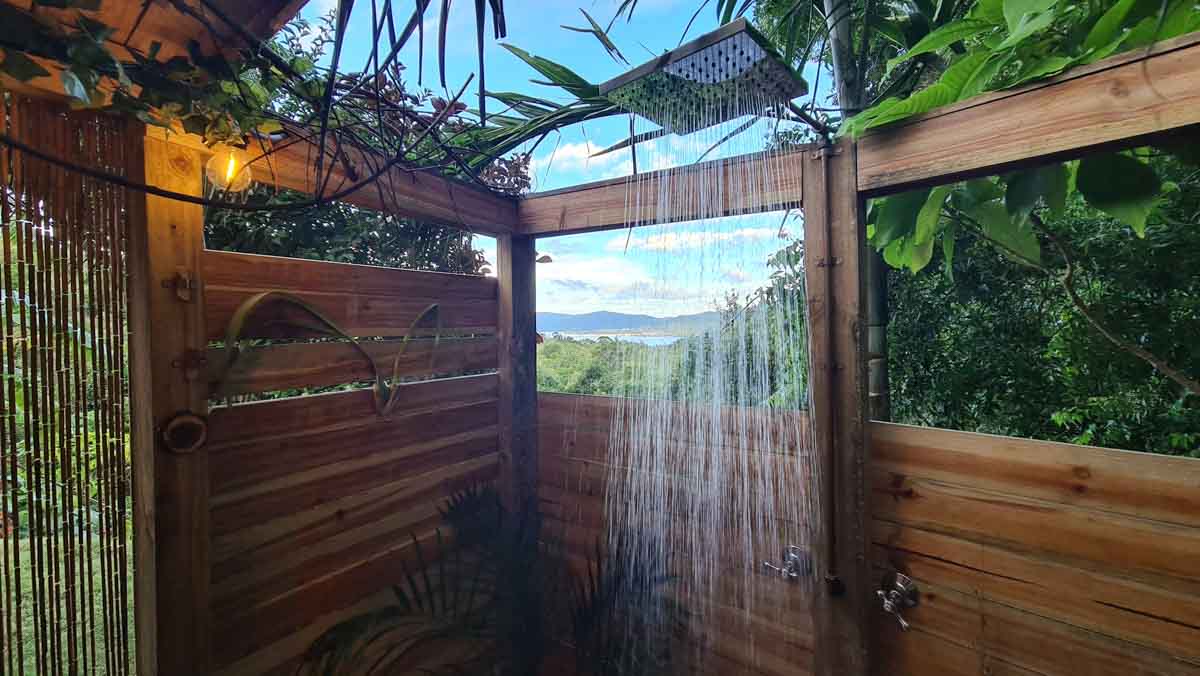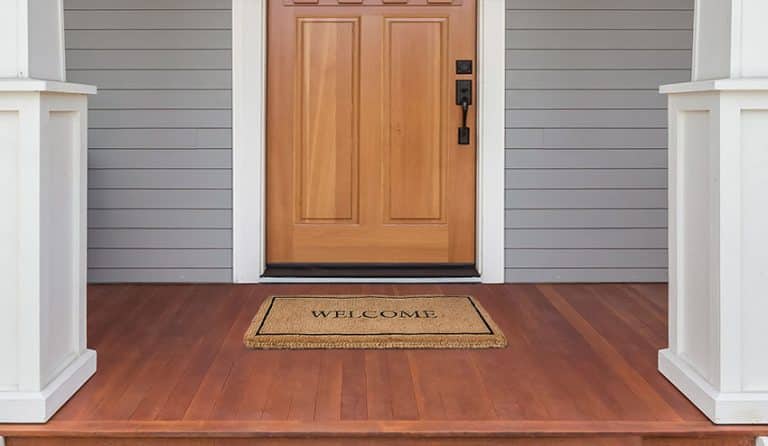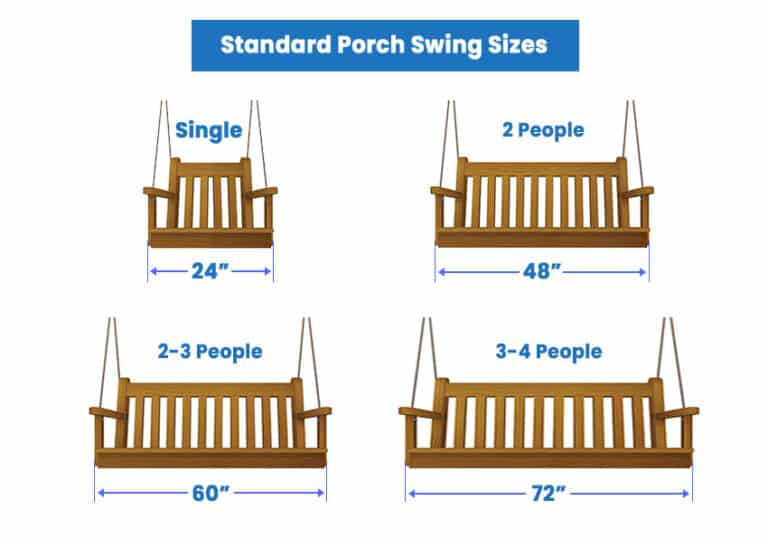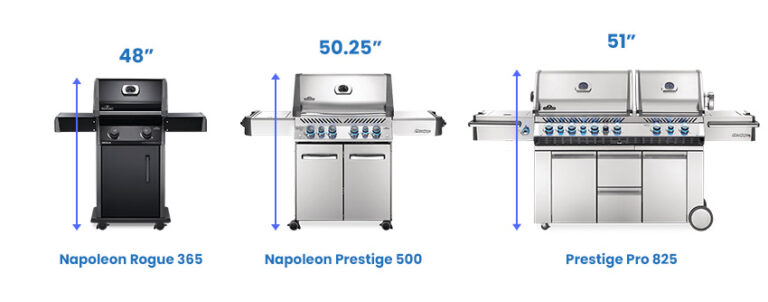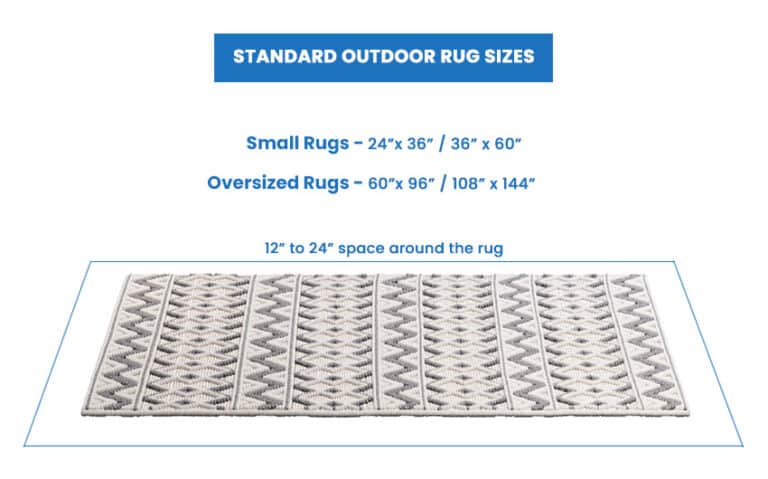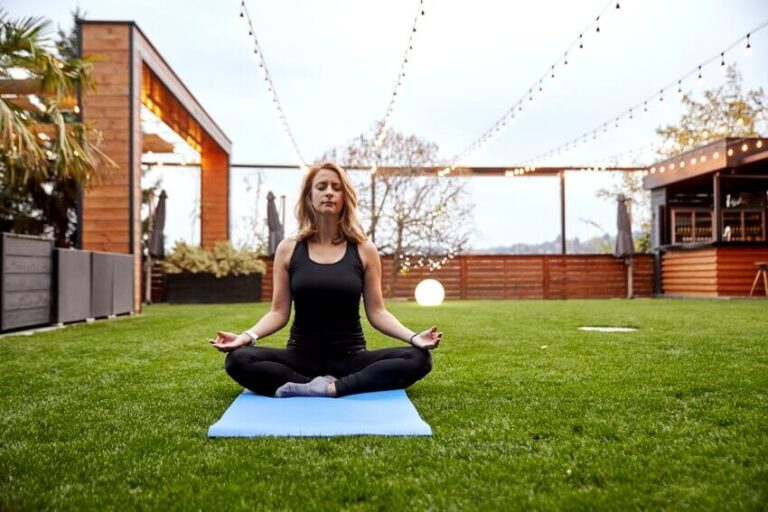Pros and Cons Of Cedar Outdoor Showers
These cedar shower ideas share what it is, the pros and cons, tips on walls, floors, cost, outdoor kit, and tips on how to seal this material.
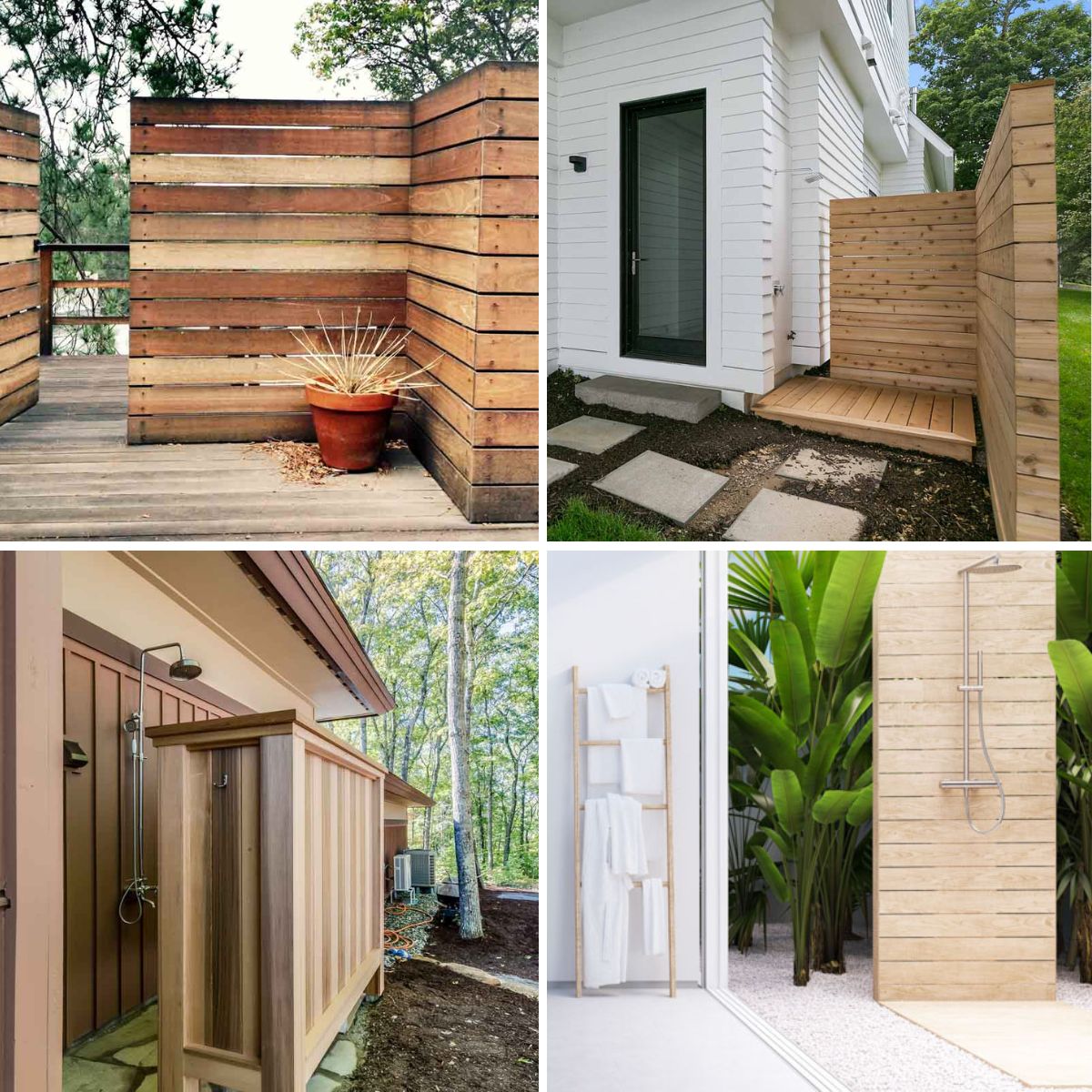
Complete your outdoor living with a cedar outdoor shower. Wood texture brings a relaxing and comforting feel to a space, and with a cedar outdoor shower surround, the rich and warm tones are just the perfect material for that spa-like experience.
In this article, we’ll explore the pros and cons of cedar outdoor showers, plus the maintenance and costs of putting up a shower wall and flooring using this wood. [toc]
What is a Cedar Wood Shower?
A cedar wood shower is a stall or enclosure made from planks or boards of the softwood tree, particularly the Western Red Cedar, known for its excellent durability and resistance to outdoor elements. These shower installations can be reinforced by posts or beams where the boards are fastened to create a wall partition.
Cedar hardwood floors raised a few inches off the shower floor can also be integrated with the wall. A trellis-like design for the wall partition is often used to provide privacy while taking a shower, while the thin spaces between the planks provide
Advantages of Cedar Constructed Showers
Lasts longer with proper treatment and maintenance: The service life of cedar outdoor showers varies from 20 to 40 years, according to many lumber providers. This variation is due to several factors, such as quality, location, treatment, maintenance, etc.
Cedar wood is also highly prized for its strength, which is why it’s so widely used in woodwork. It is also very strong. It can be used to build protection systems, such as wood shingles. – Woodworking: Step by Step Guide, DIY Plans & Projects Book (Woodworking Tips, Techniques, Tools and their Creators), Jack Mallory
However, we see many structures made with cedar that have lasted for decades. For instance, the famous Atlantic City boardwalk, a historical landmark in New Jersey, was made from white cedar until it was rebuilt using the western red variety and is projected to last for the next 50 years. Cedar has a hardness of 900 lbs for the aromatic red variation and 350 lbs for the red western species.
• Does not rot or decay due to the natural oils and acids called polyphenols.
• Relatively harder than most softwoods.
• Can withstand damp areas and adverse weather conditions where the wood does not warp or deform easily.
• Mold and mildew do not degrade the wood surfaces.
Lighter in weight compared to most other types of wood lumber: Red cedar is the most commonly used type of lumber for outdoor use. It weighs 3.1 pounds. per board foot, while its white counterpart weighs 2.3 lbs. per board foot.
This is because cedar wood has a lower density. Teak wood, a common wood species used outdoors, weighs from 4.5 to 5 lbs. per board foot. Mahogany, another popular outdoor shower material, weighs 3.45 to 4 lbs. per board foot.
• Lower costs and energy spent transporting lumber.
• Easier to lift and transport for a DIY outdoor shower.
• Lighter weight means fewer framing materials.
Creates a relaxing atmosphere: Compared to stone and other engineered wall cladding materials, these wood showers create a more relaxing and familiar atmosphere. Wooden walls, especially when the natural imperfections and color are preserved, showcase a rustic vibe that’s visually appealing and contrasts perfectly with stone-clad environments such as a pool or patio.
• Warm colors such as pinkish to red, as well as purple undertones, which eventually turn silver or gray,
• Projects a cozy and rustic vibe that can be easily matched with stone and other man-made materials.
• Gives off a pleasant smell caused by the polyphenols, as well as the natural oils that protect the wood.
Maintains a comfortable temperature for showering: Cedar showers are naturally porous and allow the material to breathe. With the light porosity of the wood coupled with its lower heat absorption rate, the wood shower can maintain a comfortable temperature.
• Insulation capabilities keep the shower area warmer during a cold season and colder during hotter seasons.
• The wood is comfortable to walk on, making the material the perfect outdoor shower floor.
Offers customization possibilities to cater to different styles: Wooden enclosures can be built in many configurations; generally, you’ll need to decide whether to arrange the planks horizontally, vertically, or diagonally.
The top part, or one-third, of the wall can be integrated with lattice patterns, where the square or checkered lattice is the most common. Horizontal slats that are evenly spaced are also popular. The spaces allow cross-ventilation through the shower enclosure. Integrate glass windows or louvers as well for more flexibility.
• The porous nature of the wood means it can be painted or stained.
• Wood in general is easy to work with, making it an attractive weekend project for DIYers and professional builders.
• Can be integrated with other materials such as glass and metal.
Cost-effective outdoor shower enclosure: A walk-in shower enclosure made out of wood can be reasonably priced, especially when the lumber is easily sourced. The reduced need for complex structural foundations and framing lessens labor work and construction time.
Disadvantages of Cedar Material Showers
Potential hardware rust: Metal screws or nails are used to fasten the planks together, as well as locks and hinges. If left unprotected, the metal fasteners and hardware can corrode over time.
Since the holes where the nails and screws are driven through have not been protected with a sealant, water can easily pass through the corroded hardware.
Liquid lacquers, sealants, and sprays can cover the nails. Use a clear sealant to retain the overall wood appearance. Then, add a wood sealant over the wood surfaces. For hardware, use stainless steel, electrified galvanized steel, and hot-dipped metal, which are rust-free materials.
Can sustain stains, especially in unsealed areas: Because cedar wood is naturally porous, water, grime, and other chemicals can seep through unsealed areas and cause staining, which can be hard to remove. To prevent staining, periodically seal or apply a protective coating to your wood surface to ensure the shower walls and floors are fully protected.
Fake cedar lumber can be hard to spot: Like other types of natural wood, fake or imitation lumber is available on the market. A common wood species used is Schima superba, which is a subtropical tree that grows in the southern part of China.
Fakers would apply cedarwood oil extract to reproduce the smell of cedar. Fake lumber is often cheaper, and the smell can quickly fade. When sanded down, true wood will reveal fresher wood underneath and release a stronger aroma.
Outdoor showers can attract insects: While this wood material is resistant to insects and mold, the surrounding areas of an outdoor area can harbor other insects, especially in the ground. The mud, trapped leaves, and debris can look messy.
Proper planning for the location of your shower should be considered, as should regular cleaning and maintenance to prevent other insects from thriving in the surrounding area. Adding gravel, stone pavers, or cement to the surrounding area of the outdoor shower will make it easier to clean and discourage insects from thriving.
Cedar Walls for Shower
An outdoor shower requires materials that can withstand the elements. One of the biggest factors to consider when picking a material is moisture damage. This is even more so when dealing with materials that soak in water. Wood, in particular, needs to be stable to avoid warping, cracking, and fading.
Cedar wood is a great choice when used on walls. This wood is very stable and can stay in a limited range in expansion and retraction due to moisture, around 18 to 23 percent. Other types of lumber can go as high as 30 percent.
Before construction, the lumber needs to be stored close to or at the site of construction to allow it to acclimate to the environmental conditions of the area. If acclimated properly, the chances of the wood shrinking, expanding, or bending are lessened or eliminated.
Cedar for Shower Floors
Cedar wood as floors brings many benefits, especially to those who have sensitive feet: young, old, or people with physical disabilities that require the right type of floor. The wood has a natural textured surface that makes it less slippery. Wood floors are generally warmer to the touch compared to tile or stone materials, which can retain heat or cold longer due to their density.
But if accidents do occur, this wood is great at absorbing impacts. The wood offers a certain degree of cushioning. Its floor planks are also great at regulating temperatures, so it is comfortable to stand on bare feet.
When designing cedar wood floors for your shower, elevate the platform. Adding grab bars or a bench can also add a safety provision for users. Also, plan the drainage system to prevent water from running through the flooring. Proper ventilation can also keep the walls and floors from accumulating water stagnation.
Cost of a Cedar Plank Shower
Most of the costs of an outdoor cedar shower installation are allocated to the labor, materials and their availability, plumbing fixtures, and the dimensions of the shower. But as a ballpark estimation, installation costs can range anywhere from $100 to $250 per square foot for standard inclusions.
• Simple Hot and Cold Shower: $1,000 to $1,200
• Mid-range Hot and Cold with Added Design: $1,200 to $5,000
• High-range or Elaborate Design: $5,000 to $10,000
• Cedar (Red Variety): $3 to $10 per linear foot
• Cedar (White Variety): $4 to $7 per linear foot
Another factor that can affect the price is the type and grade of the cedar. Like most woods, it can generally be categorized as knotty or select.
Grades:
• Standard (Construction Grade) G1F
• Premium G4S
• G4s -Defect Free
• D4S- Machined Smooth
Grade type cost:
• $1.89 LF for 2×4 premium grade
• $1.99 LF for 5/4×6 standard grade
• $6.75 each for 1x6x5’ standard grade
Other costs that can be included are:
Permits and Inspection Fees: This will depend on our locality, as some areas require permits for a shower project, especially when mounted or installed adjacent to a side of your house.
Additional Plumbing and Electrical Work: Most outdoor shower extensions are connected to the main plumbing system of a house, particularly the bathroom or laundry area. Electrical work for lighting provisions will also add to the cost of rerouting wires and will need a licensed electrician to ensure safety.
Fixtures: Shower fixtures can significantly add to the cost, especially for high-end fixtures, which include shower heads, valves, etc.
Cedar Kit for an Outside Shower
To save time and cost, an alternative to obtaining an outdoor cedar shower is to buy them in kits. The wood outdoor shower kit can come either preassembled or fully assembled. The kit should have sealed wood components like walls, framing, roof, head caps, fasteners, decking, etc. Some also have additional options such as doors, heavier posts, or lattice for privacy.
The expected price range for a preassembled 3-sided shower kit with dimensions 50 x 50 x 72 inches is $1000 to $1200.
The expected price range for a fully assembled 4-sided shower kit with dimensions 50 x 50 x 72 inches is $2500 to $3000.
Do You Have To Seal Cedar?
While not required, the wood is still porous and will take in water. Having wood sealant should lessen or prevent this from happening. Also, applying a wood sealant will prevent the cedar from turning gray.
UV damage affects cedar, but there are reasons not to apply sealants. Sealants can slightly change the natural color of the wood, and the smell is also one of the reasons people like this wood.
How Should You Clean Cedar?
Use a mild detergent, dishwashing soap, or a solution of vinegar and water 75% and 25%, respectively. Do not brush aggressively, let alone use a pressure washer or machine to clean; doing so will expose grains, making the wood prone to damage.
Gently scrub off dirt from the surface, and once done, make sure to dry the surface. Leave no moisture or stagnant liquid to prevent it from being absorbed and make the wood become a host to mold. If you want to reactivate the wood smell, use sandpaper with a very small grit value and sand carefully. Alternatively, you can seal the surface again.
Regularly cleaning your outdoor cedar shower will keep it looking its best. The frequency of cleaning will depend on your location and other environmental conditions, as well as how often you use your shower.
See more related content in our article about microcement shower walls on this page.

